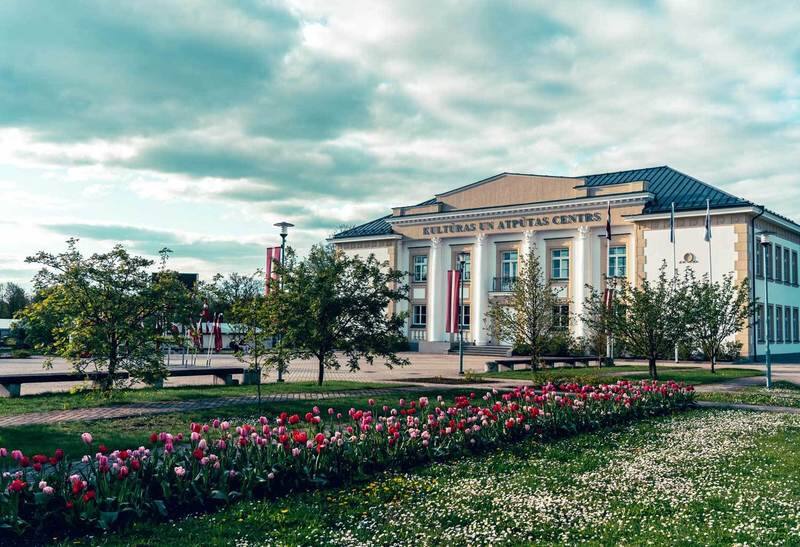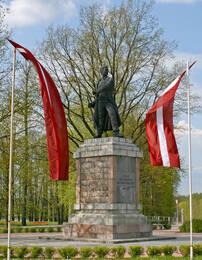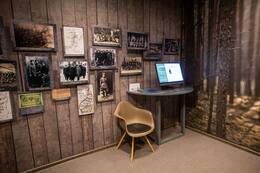Audio Guide
Balvi

In the audio guide, explore the twists and turns of the Balvi region’s history – from the era of manor lords, through the freedom struggles of the national partisan movement, to the repeated occupation and its impact on the local population.
Take a walk through the town, follow the audio guide’s route instructions, and discover Balvi from a different perspective!
You can view this guide online by visiting the following page:
Visit the GuideRelated objects
Monument to the fallen soldiers of the Latgale Partisan Regiment 1919 - 1920
During the Latvian War of Independence (1918-1920), the Balvi Partisan Division was formed in the Balvi region on the initiative of local residents, which was soon transformed into the Latgale Partisan Regiment.
The idea for a regimental monument arose as early as 1927. In 1933, former Latgale Partisan Regiment soldier and stonemason Jānis Pilmanis built a 5-meter-high stone pedestal for the monument at his own expense. The bronze monument itself was created by artist Kārlis Jansons.
The monument dedicated to the memory of the fallen soldiers of the regiment was unveiled on August 14, 1938, with the participation of General Jānis Balodis. Although the official name of the monument was “Guarding Partisan”, the people soon simply called the monument “Balva Stanislava”.
After Latvia was occupied by the USSR, the monument was demolished in the spring of 1941 by decision of the Abrene County Executive Committee. The high pedestal was demolished, but the bronze monument itself remained in the Balvi police yard.
During the German occupation, the monument's pedestal was not restored, but the bronze monument itself was placed in its previous location. After the second return of the Soviet occupiers in 1944, the monument was completely destroyed.
When Latvia regained its independence, the people of Balvi collected donations for the restoration of the Latgale Partisan Monument. On November 11, 1993, the restored monument by Andrejs Jansons, son of artist Kārlis Jansons, was unveiled in Balvi.
An additional commemorative plaque was added to the back of the monument's pedestal with the text "Renovated also honoring the Latgale national freedom fighters of 1940-1954."
Exhibition "North Latgale in the Freedom Struggle" at the Balvi Regional Museum
The museum is located in the territory of the Balvi Manor complex, in the building of the former manor barn. The exhibition allows you to look into the history of the Latvian War of Independence from the point of view of Northern Latgale, tracing the history of the formation and activities of the Latgale Partisan Regiment. There are photographs and copies of documents that are not available elsewhere, including the order of 5 July 1919 on the formation of the regiment. The internal orders of the regiment are unique – they were written in Russian between July and October 1919. This reflects the peculiarities of the formation and composition of the regiment as a local unit, where Latvians, Latgalians, Russians, and Jews fought together. The regiment only switched to Latvian in its internal orders after it was fully integrated into the Latvian Army system when it was supplemented by mobilised soldiers from other regions of Latvia. The exhibition also reflects the liberation operation of Northern Latgale, during which the Latgale Division of the Latvian Army liberated the surroundings of Viļaka, Jaunlatgale and Kārsava in battles that lasted from 9 to 15 January 1920. Evidence of both the operation as a whole and the combat activities of the Latgale Partisan Regiment during the liberation of Kārsava are on display in the exhibition.





